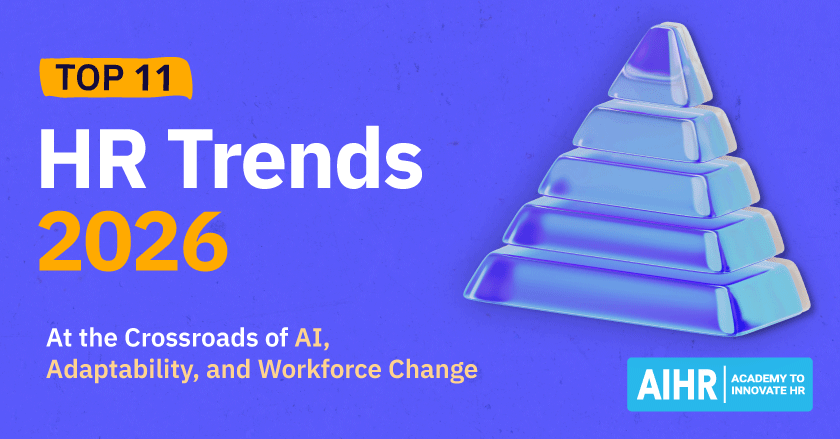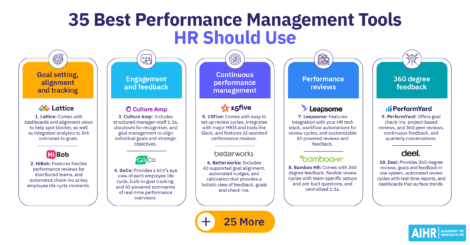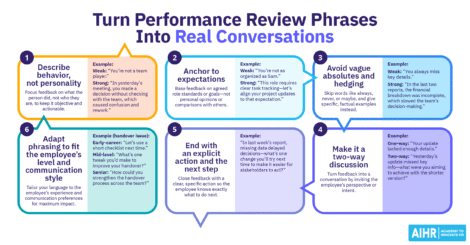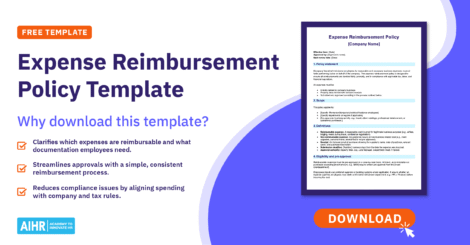Organizations face the fallout from misconduct every year. According to a Mercer Marsh Benefits survey, misconduct ranked among the top five “people risks” for U.S. companies last year. Issues like theft, fraud, harassment, and inappropriate behavior can occur even in well-managed workplaces.
Handling misconduct fairly and thoughtfully is key to maintaining a safe, respectful environment and strengthening an organization’s ethical culture.
In this article, we’ll break down the main types of employee misconduct, share real-world examples, and outline practical steps for addressing it effectively.
Contents
What is employee misconduct?
Types of employee misconduct
Employee misconduct examples
Disciplinary action examples for employee misconduct
Warning letter to employee for misconduct
How to investigate and address employee misconduct
FAQ
What is employee misconduct?
At its core, employee misconduct is any violation of company policies or deliberate disregard for legal and ethical standards. When employees act in ways that go against written rules or expected workplace behavior, they disrupt the environment and erode the trust that’s essential for a healthy employee-employer relationship.
Consequences for misconduct are unavoidable and can range from a verbal or written warning to suspension or even termination.
Types of employee misconduct
Employee misconduct can take many forms, from minor issues to severe offenses. To respond appropriately, it helps to categorize behavior based on its seriousness. Broadly, misconduct falls into four main types:
Minor misconduct
This involves engaging in negligible behaviors that don’t cause direct harm but still go against workplace norms and cause disruption. Examples include tardiness, extended breaks, minor safety or dress code violations, unprofessional or inappropriate language or comments, and misuse of company time.
This type of workplace misconduct is usually handled through verbal or written warnings and ongoing monitoring.
Serious misconduct
These actions directly violate company policies and carry the potential to breed conflict or undermine workplace safety. Examples include harassment, bullying, repeated insubordination, unauthorized absences, falsifying documentation, and misuse or damage of company property.
Serious employee misconduct should result in formal disciplinary procedures.
Gross misconduct
Gross misconduct involves actions that cause immediate and significant harm to the company or its people. Examples include physical violence, sexual harassment, theft, fraud, excessive property damage, serious breaches of health and safety, gross negligence, grave insubordination, or bringing the organization into disrepute.
Some industries also classify breaches of confidentiality, taking on prohibited secondary employment, or being under the influence of drugs or alcohol at work as gross misconduct. In most cases, this level of behavior justifies instant dismissal without notice, even for a first offense.
Online or digital misconduct
As digital tools and remote work have become standard, new forms of misconduct have emerged. These include unauthorized data access, cyberbullying, misusing the company email, violating social media policies, downloading illegal content on company devices, or sharing confidential information.
Organizations should clearly define these behaviors in their policies and specify whether they fall under minor, serious, or gross misconduct so they can mete out consequences consistently.
Learn to strengthen culture with consistent, values-based talent practices
To minimize misconduct at your organization, you must set clear expectations, communicate effectively, and shape a culture where people understand what’s expected and have the tools to grow.
✅ Build clear frameworks that connect talent development with organizational values
✅ Design consistent processes for performance, feedback, and accountability
✅ Support employee growth while minimizing conduct issues and uncertainty
✅ Develop a culture that balances high standards with fairness and trust
Learn at your own pace with the online Talent Management & Succession Planning Certificate Program.
Employee misconduct examples
Some forms of misconduct show up in almost every workplace, while others reflect the individual choices of the people involved. Below are a few hypothetical situations that illustrate how different types of misconduct can occur:
- Minor misconduct example: Sophie’s role requires her to be at her desk by 9:00 a.m. For two weeks, she’s been arriving around 9:20 a.m. without informing her manager, coffee in hand. Although she consistently completes her work, her lateness frustrates coworkers who arrive on time and feel she’s skirting the rules.
- Serious misconduct example: Robert, a sales manager, decides to “haze” a new team member, Samuel, by assigning him an unrealistic sales target for his first week. When Samuel inevitably falls short, Robert berates him with crude remarks in front of the team. Samuel is humiliated, and Robert’s bullying behavior unsettles the rest of the group.
- Gross misconduct example: Leo, a finance assistant, assumes his expense reports won’t be closely reviewed. He begins slipping in personal taxi rides and restaurant bills for reimbursement. Months later, the finance director identifies a clear pattern of fraudulent claims, exposing Leo’s misconduct.
- Digital misconduct example: Jessica works remotely and enjoys sending morning memes to her colleagues on the company’s chat app. After two coworkers express that some memes were inappropriate, Jessica stops including them, but retaliates by excluding them from important work-related conversations. This behavior isolates the employees and disrupts team collaboration.
Disciplinary action examples for employee misconduct
Misconduct needs to be addressed through disciplinary action to ensure it doesn’t persist and become tolerated.
The following progressive disciplinary process includes the customary steps organizations take when employee misconduct happens:
- Verbal warning: This is the initial way to confront minor misconduct, such as tardiness or distraction from work due to phone use. It should be a private conversation in which the supervisor explains the infraction and reminds the employee of the related expectations. The supervisor must also document the discussion.
- Written warning: If the minor misconduct continues or if the behavior is more serious, such as misuse of company property or unauthorized absences, the company must issue the employee a formal written warning that goes into their personnel file. It should clearly outline the behavior that needs to change, how it violates company policy, and the consequences for continued misconduct.
- Suspension: In cases where verbal and written warnings do not stop the behavior, or the offense is very serious to begin with, suspension is warranted. Temporarily removing the employee from the workplace acknowledges the gravity of the offense and gives them time to reflect on the issue. It also allows HR to do a more thorough internal employee misconduct investigation and formulate a performance improvement plan for the employee to agree to before returning to work.
- Demotion or loss of privileges: In some cases, reducing an employee’s responsibilities, title, or compensation can be more constructive than dismissal. Demotion may be appropriate when an employee has potential but cannot meet expectations in their current role. The documentation should spell out the new responsibilities and what steps the employee must take to regain trust.
- Termination (dismissal): If misconduct continues despite corrective measures, or if the offense qualifies as gross misconduct, termination may be the only option. This final step permanently ends the employment relationship.
HR tip
Employees should clearly understand the consequences of misconduct. Your disciplinary policy needs to spell out the potential penalties, outline the progressive steps that will be followed, and specify which behaviors may lead directly to termination.
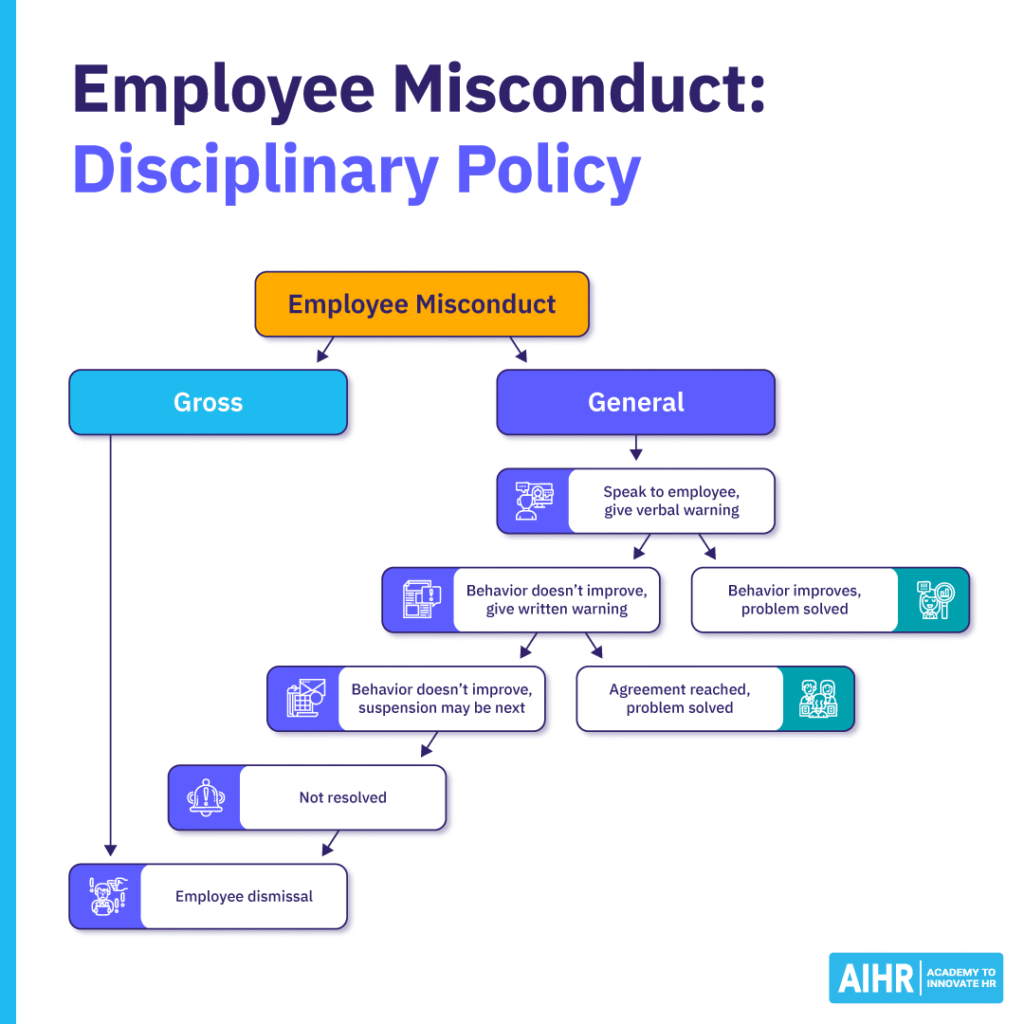
Warning letter to employee for misconduct
A well-written warning letter is an essential tool for formally addressing misconduct. It clearly states the problem, reiterates expectations, and gives the employee an opportunity to correct their behavior before the company takes more serious action.
It’s also good practice to use a standardized employee misconduct form. Consistent documentation ensures the company handles every case fairly and uniformly. Using the same terminology across forms helps avoid confusion and strengthens the overall process.
Here’s a sample warning letter you can adapt for your own use.
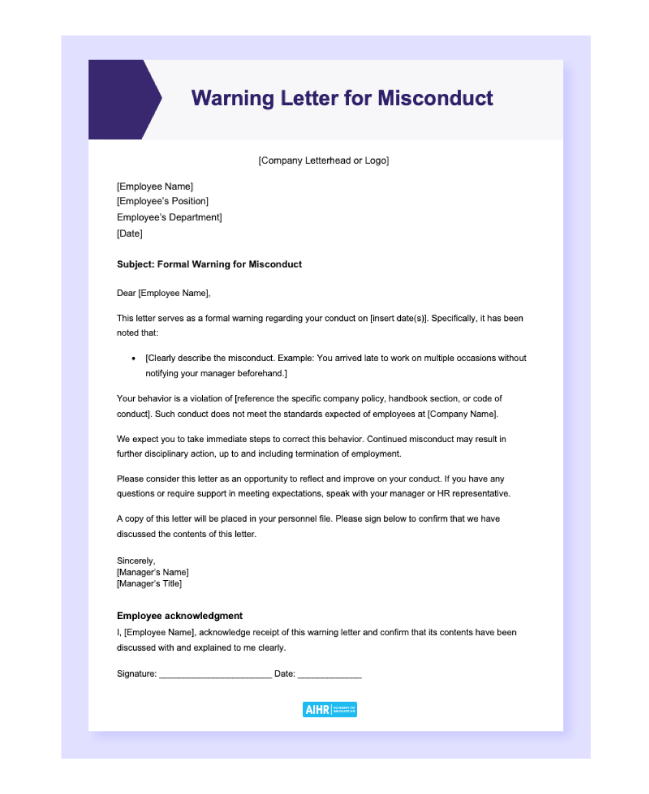
How to investigate and address employee misconduct
Taking action on misconduct is critical. Left unchecked, it can spread, encourage further employee misbehaviour, and even become normalized. Additionally, a Gallup study found that 22% of employees stay silent about unethical behavior because they don’t believe their employer will act.
The goal should always be to correct behavior before it escalates into discipline. Having clear investigation procedures ensures consistency, transparency, and legal compliance.
Here are the key steps for handling misconduct effectively:
Step 1: Start the investigation
Begin by reviewing the complaint and assessing the nature and seriousness of the allegation. Based on the evidence available, the potential impact on the workplace, and any legal obligations, decide whether it warrants a formal investigation.
Not every incident is misconduct. Some cases may reflect poor performance or be too minor for a full investigation, and managers can often address these directly.
Step 2: Review relevant policies and procedures
Identify which company rule the employee has violated so you can reference it in the investigation documentation. This is essential for demonstrating that disciplinary measures are grounded in pre-established behavior standards and ensuring an impartial, consistent, and legally compliant process for all investigations.
Step 3: Form an investigation plan
Define the scope of the investigation:
- What facts do you already know?
- What evidence do you need to collect?
- Which witnesses should you interview?
- Is there a need for observation?
Notify the accused employee and their supervisor that the process is underway. Clearly explain the procedures, the employee’s rights, and the importance of both participation and confidentiality.
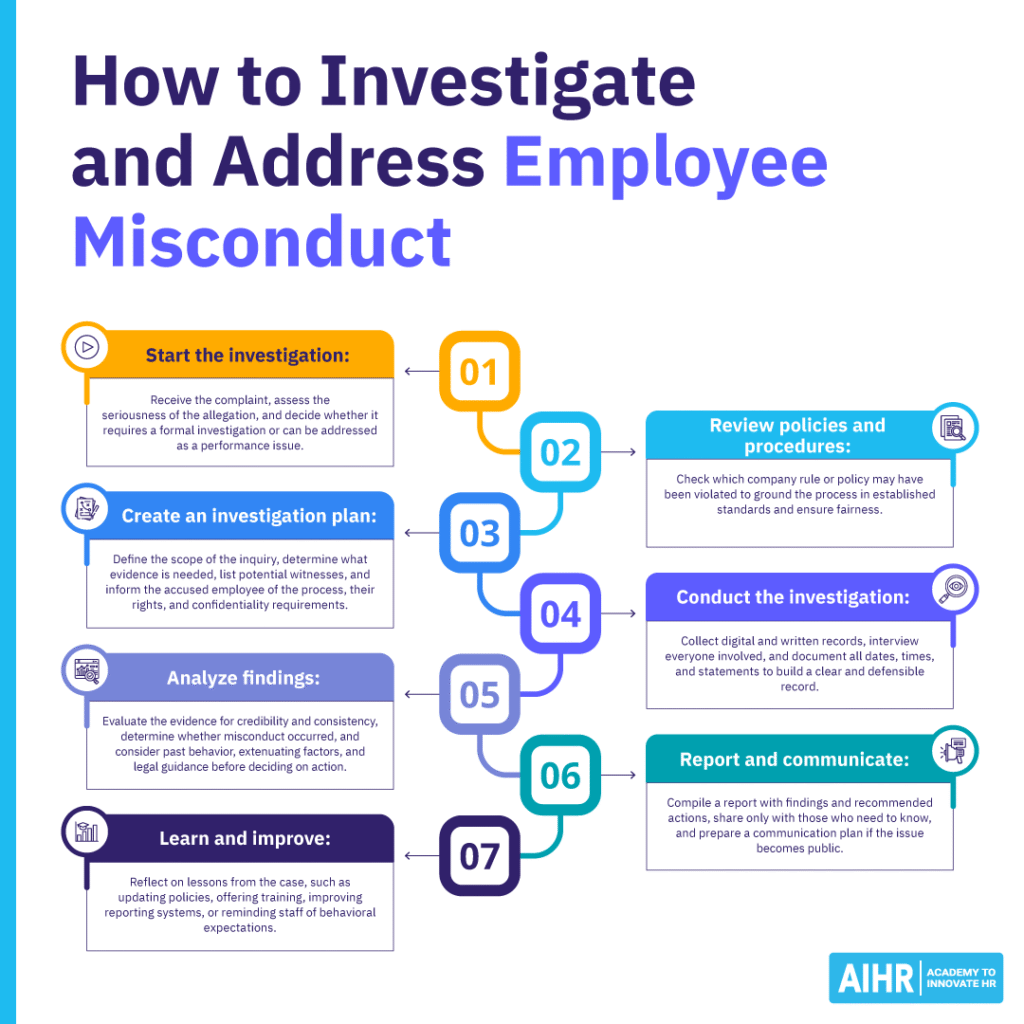
Step 4: Conduct the investigation
Gather the evidence by collecting all digital and written records of the incident and interviewing the complainant, the accused employee, and all witnesses. Maintain detailed documentation of all evidence, each step of the investigation, and every verbal and written statement witnesses provide.
Note exact dates, times, places, and conversations related to the employee misbehavior incident. Documenting the investigation provides defensible proof if your employee decides to take legal action. Also, in cases of safety misconduct, government agencies require thorough records.
HR tip
If an unbiased internal investigation is not possible, bring in a third party. This can be especially useful when your organization lacks a trained workplace investigator or when the complaint is complex and likely to take considerable time.
Step 5: Analyze findings
Review the evidence carefully and assess its credibility. Look for corroboration to confirm whether the behavior constitutes misconduct under company policy or relevant legal standards.
Then decide on the appropriate remedial action. Consider whether the employee has prior disciplinary issues or warnings, any extenuating circumstances, and how the company has addressed similar cases in the past. Consistency helps maintain fairness and avoid the perception of bias.
Because wrongful termination or discrimination claims are common, it’s important to involve legal counsel. Having an expert review the case reduces risk and protects the organization.
Step 6: Compile a report and communicate next steps
Prepare a report that summarizes the investigation process, findings, supporting documentation, and recommended disciplinary actions. Share it only with those who need to know, such as the employee involved, their supervisor, and other relevant stakeholders.
If the incident becomes public, the organization’s reputation may be at stake. Negative press and social media commentary are common in these cases. Develop a communication plan to explain the situation to both internal teams and external audiences as needed.
Step 7: Look for insight to be gained from the investigation
Beyond resolving the immediate issue, reflect on what the investigation reveals about your policies, training, and reporting processes.
- A policy that requires updating
- A need for conflict resolution or coping skills training
- Weaknesses in the reporting system for misconduct
- The importance of refreshing staff on behavioral expectations and workplace policies.
Over to you
Addressing employee misconduct is essential for maintaining a safe, respectful, and productive workplace. When HR treats every allegation with care, investigates thoroughly, and enforces consequences consistently, it protects team cohesion and upholds the organization’s reputation.
FAQ
Employee misconduct refers to actions that violate workplace rules, company policies, or legal and ethical standards. It can range from minor issues to serious offenses, all of which disrupt workplace continuity or compromise the employer’s interests.
Behavior defined as gross misconduct, such as theft, fraud, severe harassment, violence, or serious safety violations, typically results in immediate termination. An employee’s failure to stop lesser misconduct over time may also result in dismissal as the final stage of a progressive disciplinary action plan.


